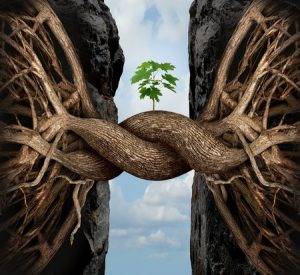 lightwise
lightwise
The celebration of multiple pathways and styles of addiction recovery is a central tenet of the new addiction recovery advocacy movement. And yet if one listens carefully to the diversity of recovery stories rising from this movement, there is a striking and shared central thread that forms the connecting tissue across secular, spiritual, and religious frameworks of recovery; across recovery in diverse populations and cultural contexts; and across the mediums of natural recovery, recovery mutual aid, and professionally-assisted recovery initiation. That central thread is a sustained, irrevocable commitment for personal change.
The forms of expression of that commitment vary widely. In Twelve-Step programs, it is rooted in the paradox of strength (action) rising from acknowledged limitation (powerlessness) and the experience of surrender--a paradox Kurtz and Ketcham characterized as the spirituality of imperfection, e.g., change emerging from the acceptance of one's Not-Godness. Faith-based recovery programs such as Celebrate Recovery share a similar focus on powerlessness and the need for connection to resources that transcend the self. In secular recovery frameworks such as SMART Recovery or Secular Organizations for Recovery, the recovery commitment is centered quite differently in self-empowerment and self-reliance--a chosen sobriety priority. In recovery frameworks rising from historically-oppressed populations, one often finds the recovery commitment expressed through a similar assertion of self, as found in Dr. Jean Kirkpatrick's (1986, p. 166) discussion of Women for Sobriety's First Statement of Acceptance ("I have a drinking problem but it no longer has me. I am the master of it and I am the master of myself."). Such assertion is also evident in recovery ministries rising within African American communities, such as the firstact of resistance? ("I will take control of my life") in Glide's Africentric framework of addiction recovery (Williams & Laird,1992). Today's recovery advocates offer a similar challenge to action: "Recovery by any means necessary, under any circumstances. No matter what, don't pick up!"
Whether through transcendence of self or assertion of self, a forged and sustained commitment to change is at the center of recovery initiation and maintenance across pathways and styles of addiction recovery. But what is the ultimate source of such commitment to recovery? We know that such commitment can come in a lightning strike (what researchers have called quantum change or transformational change) or in a much slower staged process of change, but what are its essential ingredients? Multiple factors can interact to set a detonation point of recovery initiation. These can take the form of push (avoidance) factors and pull (approach factors) or constitute a process more aptly described as drifting out of addiction and into recovery. Push factors include personal identity issues, family and significant other concerns, health concerns, economic concerns, legal troubles, fear of future consequences, and a progressive erosion of positive drug experiences. Pull factors include exposure to positive recovery role models (recovery carriers), recovery-specific family and social support, windows of opportunity for lifestyle change (e.g., relocation, job change), and emergence of new beliefs (e.g. religious conversion).
I have argued in my earlier writings that recovery involves a process of reaching critical mass in a synergy of push (pain) and pull (hope) factors. Pain in the absence of hope within the context of addiction drives only sustained drug use and further self-destruction. Hope in the absence of pain in the context of addiction fuels only belief in one's ultimate invulnerability and continued drug use and related excessive behaviors. It is in a uniquely personal ratio between pain and hope that one finds the spark of recovery commitment igniting into a sustainable fire. That recovery alchemy can come early or late in one's addiction career, with such timing profoundly influenced by one's family and social environment. The future of recovery lies in a greater understanding of how these interior and exterior environments can be influenced to spark and sustain recovery commitment.
The growing varieties of conditions from which such pain-hope synergies can be elicited are revealed in acts of recovery storytelling within diverse private, professional, and public settings. What they reveal is that recovery stability in the short-term can be challenging, but that the odds are stacked toward long-term success. As we develop a deeper understanding of the natural world, it does become clearer that nature (life) will find a way. So will recovery, if given the opportunity.
Of Potential Interest
Kirkpatrick, J. (1986). Turnabout. New York: Bantam Books.
White, W. (2012). The history of Secular Organizations for Sobriety Save Our Selves: An?interview with James Christopher. Posted at www.williamwhitepapers.com and www.facesandvoicesofrecovery.org
White, W., & Chaney, R. (1992). Metaphors of Transformation: Feminine and?Masculine. Bloomington, IL: Chestnut Health Systems.
Williams, C. with Laird, R. (1992). No Hiding Place: Empowerment and Recovery for Troubled Communities. New York, NY: Harper San Francisco.